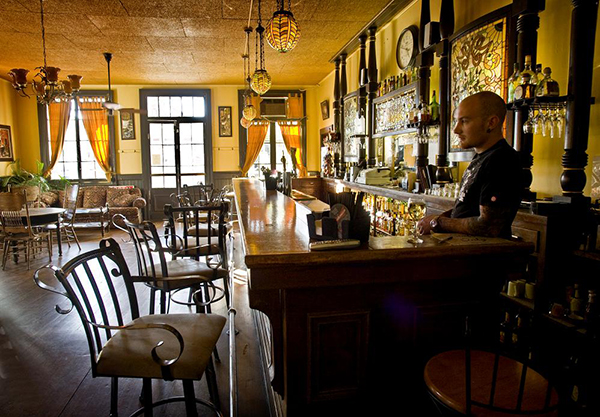Mokelumne Hill was one of many mining camps established hastily during the California gold rush. This one became a town-a wild one.
For fortune seekers, the most exciting region in the world during the mid-19th Century unquestionably was the Sierra Nevada foothills of California. The great Gold Rush, beginning in 1848, gave California its nickname, “The Golden State.”
“Gold in Them Thar Hills”
When lumberman James Marshall discovered gold at Sutter’s Mill on the American River in 1848, it touched off a mad rush of fortune hunters. Seven thousand “Forty-Niners” converged on the area. By the mid-1850s, California’s population had exploded from 15,000 to more than a quarter of a million.
A few gold diggers actually struck pay dirt: Some $450 million worth of ore—a staggering sum in those years—was extracted from California.
“Mok Hill”
Of the many mining camps established along the foothills, Mokelumne Hill (“Mok Hill,” derived from a Indian word) was both typical and unique. Settled early in the rush, it originally was a bustling village of canvas tents.
So intent were the miners on making the first big strike that none was willing to interrupt his labors and trek to nearby Stockton for food and supplies. All were on pathetically low rations when one among them decided he just might make more money at a steady trade—storekeeping—than scrapping for nuggets. He brought back enough goods to set up Mok Hill’s first tent store.
Needless to say, he offered few bargains.
That transformed Mokelumne Hill from a tent camp to a bona fide frontier town. Other shops were set up, some constructed of boards. After a fire in 1854 destroyed the rough-hewn settlement, undaunted merchants raised new buildings from the ashes—this time using stone. Mok Hill began to wax somewhat sophisticated, complete with a theatre.
It also became the government seat of Calaveras County by virtue of its population.
A Mining Town at War
Greed and unrest commonly spawned violence in gold camps, and Mokelumne Hill was no exception. Its history is marked by two small, ethnic “wars.”
The first was the “Chilean War” of Winter 1849-50. A group of Chilean miners led by a Dr. Concha were accused of unfair claim filing. After a dispute, they were driven from their gulch by other miners. Concha, however, obtained a legal warrant in Stockton and returned in force, arresting 13 of his foes and killing two others. The prisoners broke free, immediately set up “court” and hanged three of the Chilean miners.
Later, in the “French War” of Mokelumne Hill, a group of French miners were ousted by claim jumpers and their gold ore confiscated.
No More Gold, No More Town
Mokelumne Hill fell into abandonment and dilapidation after the Gold Rush ended in 1863. Today, though, it has returned to life. Mok Hill is a thriving, friendly village whose residents proudly preserve their heritage. Among other landmarks is California’s oldest Congregational Church building (constructed in 1856).
Although the Gold Rush ended long ago, some of California’s rivers and streams still are being worked and produce substantial rewards.








